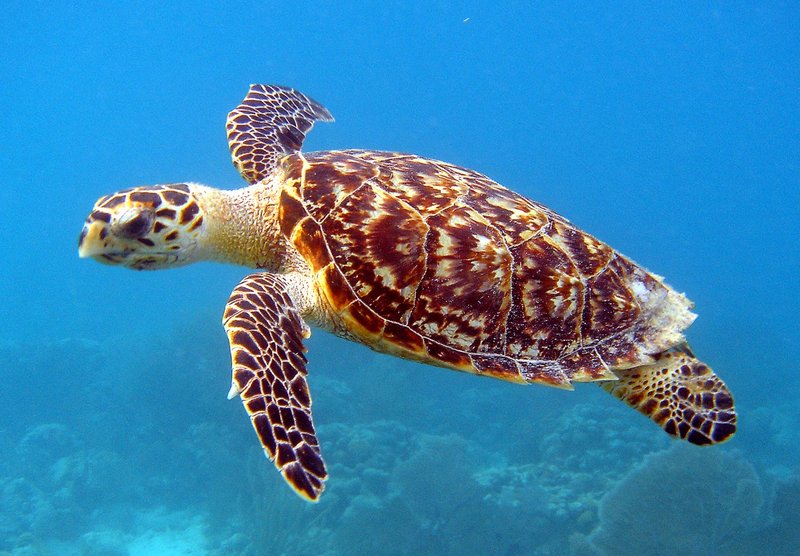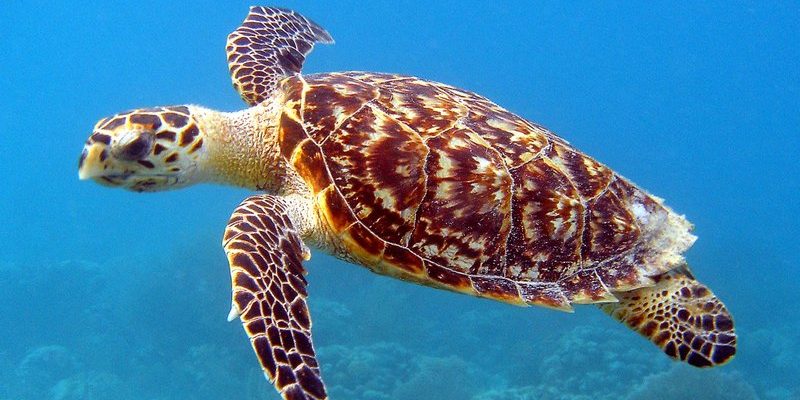
Knowing where turtles live can be really fascinating, especially since they inhabit some pretty unique environments. From tropical oceans to the serene banks of rivers, turtles have adapted to thrive in diverse landscapes. Let’s explore their habitats and learn more about these incredible reptiles, shall we?
Tropical Oceans and Sea Turtles
One of the most common places to find turtles is in the vast, salty expanse of our oceans. Sea turtles are particularly well known for their oceanic adventures. Imagine them gliding through the water, with the blue sea providing both a home and a playground.
You might be wondering where exactly in the ocean these turtles prefer to swim. There are seven species of sea turtles, each with its own set of habits and habitats. For example, Loggerhead turtles love the warm waters of the Mediterranean and the Atlantic Ocean, while Hawksbill turtles favor coral reefs in tropical regions. They often travel long distances, sometimes crossing entire oceans, searching for food and nesting sites.
These turtles are not just confined to deep waters; they often come close to shorelines to feed on sea grass and jellyfish. Coral reefs are especially appealing, offering both food and shelter from predators. Sadly, threats like habitat destruction and pollution are impacting these beautiful creatures, making their habitats more fragile than ever.
Freshwater Habitats and River Turtles
Turtles also thrive in freshwater environments. This includes rivers, lakes, and ponds, where they can be spotted sunbathing on rocks or gliding through the water. Freshwater turtles are quite different from their ocean-dwelling cousins, but just as charming.
Let’s take the Red-eared slider, for instance. This little guy is often found in ponds and slow-moving rivers throughout the United States. They’re known for their striking appearance and love for basking in the sun. You might find them in parks or even in your local pond.
These turtles prefer areas with lots of vegetation. The plants provide both food and hiding spots from predators. They thrive on a diet of aquatic plants, insects, and even some small fish. But just like sea turtles, many freshwater turtles are facing challenges, including habitat loss and pollution. Sustainable practices can help preserve their habitats.
Deserts and Land Turtles
Not all turtles are aquatic! Some prefer dry land and have adapted wonderfully to survive in arid environments. Tortoises, a type of land turtle, can often be found in deserts and scrublands. You might think it would be hard for any animal to live in such a dry place, but tortoises have clever adaptations that help them thrive.
Take the Desert tortoise as a prime example. Found in the Mojave and Sonoran Deserts, this tortoise has a remarkable ability to store water, allowing it to endure long periods of dryness. They create burrows in the ground to escape the heat and retain moisture. You might even find them rising from their naps during cooler parts of the day to forage for food, mostly consisting of dry grasses and wildflowers.
These land-dwelling turtles play vital roles in their ecosystems, helping to maintain the plant populations and soil health. But they too are threatened by human activities, such as urban development and off-road vehicle use in their habitats.
Coastal Areas and Their Importance
Coastal areas are crucial habitats for various turtle species. These regions serve as nesting grounds for sea turtles and provide nurseries for hatchlings. When adult female turtles return to shore to lay their eggs, they choose sandy beaches to dig their nests. This is where the magic happens; the future generation begins its journey.
Let’s consider the Green turtle, which often nests on tropical beaches around the world, including the Caribbean and parts of Hawaii. After laying eggs, the mothers return to the sea, leaving tiny turtle hatchlings to brave the ocean on their own. It’s a dangerous world out there, with predators waiting and environmental hazards looming.
The health of coastal ecosystems is tied to the well-being of turtle populations. Unfortunately, these areas face threats from development, pollution, and climate change, which can disrupt nesting sites and endanger hatchlings. Protecting these habitats is vital for the survival of many turtle species.
Island Ecosystems and Unique Species
Islands can be a turtle’s paradise, offering unique ecosystems where some rare species thrive. The Galapagos Islands, for example, are home to the famous Galapagos tortoise. These gentle giants have adapted to the islands’ diverse environments, from dry scrublands to lush highlands. Their size and longevity make them fascinating subjects for study and conservation.
Islands present a bit of a double-edged sword. On one side, they provide limited habitats that can lead to unique adaptations, but they also make turtle populations more vulnerable to extinction due to their isolation. The introduction of invasive species or human activities can rapidly disrupt these delicate ecosystems.
Tourists and researchers flock to these unique environments, often contributing to conservation efforts. Organizations work to protect nesting sites and educate visitors about the importance of these stunning creatures.
Challenges Facing Turtle Populations
Despite their adaptability, turtles face numerous challenges around the world. Pollution, habitat destruction, climate change, and poaching are significant threats that make it harder for turtle populations to survive. For instance, plastic pollution in oceans can lead to deadly ingestion, while rising sea levels threaten nesting beaches.
Conservation efforts are crucial to combat these problems. Many organizations focus on protecting habitats, promoting sustainable practices, and raising awareness about the importance of turtles in our ecosystems. If we work together, we can create a brighter future for these ancient reptiles.
Turtles have been around for millions of years, and they’re worth fighting for. You might not think about it often, but every little action helps—like reducing plastic use or supporting organizations dedicated to turtle conservation.
Turtles are incredible creatures that can be found in many different parts of the world. From ocean depths to desert sands, each habitat plays a vital role in their survival. Learning about where turtles are found helps us appreciate their incredible adaptability and the challenges they face.
As we explore the world of turtles, it’s essential to remember our connection to them. Protecting their habitats isn’t just about saving a species; it’s about preserving the health of our planet. So, the next time you see a turtle—whether in a zoo, a pond, or a documentary—take a moment to appreciate its unique journey and the diverse habitats it calls home.

